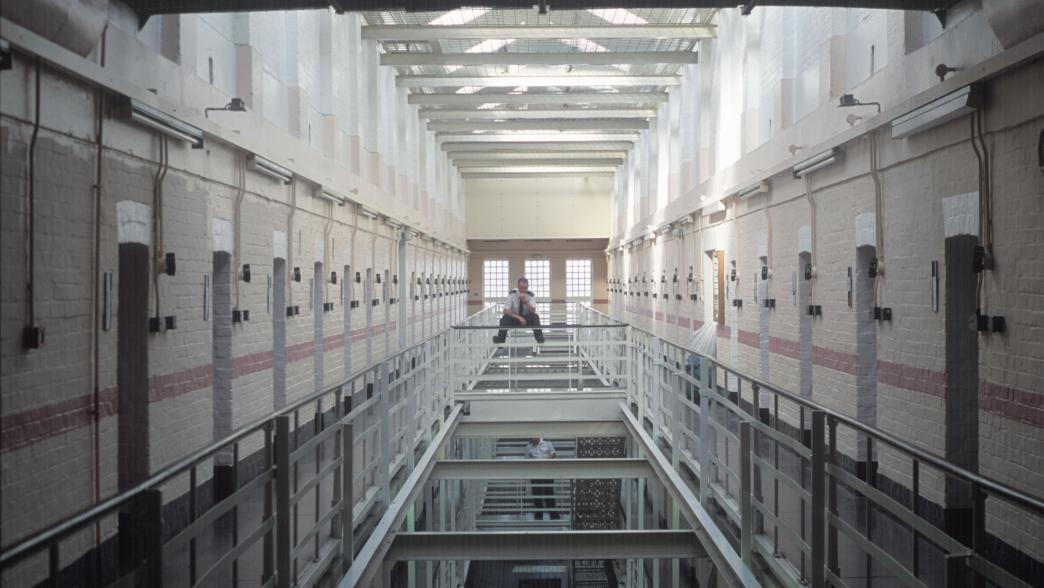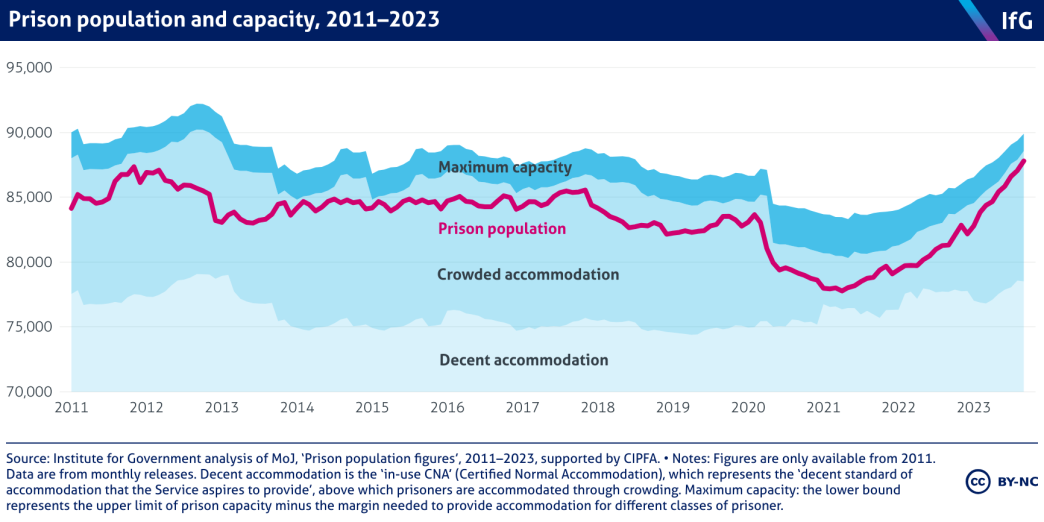Emergency prison measures are the result of poor policy making
The situation in prisons will get worse before it gets better.

Prisons are at breaking point. The Times has reported that judges have been urged by the government to delay sentencing even for some serious criminals, including rapists, due to overcrowding. Other emergency measures already in place include prisons using police cells to temporarily house inmates. Such measures are a result of government’s inability to prepare for a crisis it knew was coming, and show how urgently a change of approach is needed, says Gil Richards
The prison estate is full
The prison population increased by 13.4% between April 2021 and 13 October 2023, and now stands at 88,225 – the highest since at least January 2011. This is due to a combination of courts working through their pandemic backlogs, those same backlogs causing a growth in the remand population (inmates held while awaiting trial or sentencing) and longer sentence lengths.
This is a concern for several reasons. Most fundamentally, there are simply too many prisoners to accommodate safely and decently, with many being held in crowded – and poor – conditions. 20 https://www.theguardian.com/uk-news/2023/sep/25/one-in-10-prisons-in-england-and-wales-should-be-shut-down-watchdog-says The figures also show that the estate is simply running out of space. The population is currently just 557 places shy of ‘useable capacity’ – the number of prisoners that can be held given the need to provide different accommodation for different classes of prisoner. That figure was 2,693 in April 2021. Had the government not resorted to doubling up prison cells in the last year, it would already be well above capacity. This is not a repeatable trick.
Making matters worse are prison staffing numbers, which have failed to keep pace with the rise of prisoner numbers over this period. This has led to various ill effects, such as violence rates surging and some prisons having to keep pandemic-era regimes in place, with inmates remaining in their cells for 20 hours a day, reducing their access to rehabilitative programmes.

The government was aware of these trends
In November 2020, the Ministry of Justice forecast that the prison population would be 93,000 in September 2023 29 https://www.gov.uk/government/statistics/prison-population-projections-2020-to-2026 – more than 5,000 places higher than the actual figure recorded last month. To prepare for this, it announced plans in 2021 to expand the prison estate by 20,000 places by the middle of the decade. So it is all the more damning that the government is having to resort to emergency measures now.
As it stands, those 20,000 places will not be delivered before the end of the decade – and certainly not in time to match the rise in prisoner numbers, which are expected to outpace the government’s building plans. Instead, the government has resorted to a string of emergency measures over the last year: judges were urged to have “awareness of the impact of current prison population levels” when sentencing criminals; 30 Letter from the Minister for Prisons and Probation, dated 4 May 2023 on the Prison Operational Workforce Inquiry (parliament.uk) magistrates’ sentencing powers have been halved 31 Magistrates' sentencing powers scaled back | News | Law Gazette (despite being doubled less than a year before); the justice secretary has even mooted the idea of renting prison space from other countries. 32 Alex Chalk – 2023 Speech to Conservative Party Conference – UKPOL.CO.UK
None of this makes for consistent or coherent policy making on prisons.
Inconsistent policy making must make way for credible planning
Alex Chalk, the justice secretary, is expected to announce plans to lower the number of short sentences 33 https://www.telegraph.co.uk/news/2023/10/12/criminals-sentences-under-six-months-spared-prison/ – plans that had previously been cancelled under Boris Johnson. 34 Prison Population 2022: Planning for the future: Government Response to the Committee's Sixteenth Report of 2017–19 (parliament.uk) He is also expected to announce plans to release some prisoners early, again going against former policy – Dominic Raab, his predecessor in the role, apparently “refusing to contemplate” such a move. 35 https://www.telegraph.co.uk/news/2023/02/28/prisoners-may-have-released-early-dominic-raab-warned-prisons/ While the government is right to take steps to free up capacity, waiting for crises to strike before addressing policy problems is the wrong way to run any public service.
The prison service should be a tool for protecting the public and rehabilitating offenders. If the Times reporting 36 https://www.thetimes.co.uk/article/judges-told-not-to-jail-rapists-as-prisons-are-full-2tfgb2czs is accurate it is not currently doing the former – and as our upcoming 2023 edition of Performance Tracker, the IfG and CIPFA’s annual stocktake on the health of public services, will show, it is not doing the latter either.
The government should also be aware that the situation is set to get more severe, not less, in the coming months and years: greater numbers of police officers are issuing more charges; courts are with government help striving to process more cases; necessary repairs to the prison estate, some requiring inmates to vacate buildings, cannot be postponed indefinitely.
Without a credible plan for prisons, and an approach to that acknowledges the links between different actors in the criminal justice sector, the risk is that emergency measures will become the norm. This would be to the detriment of all involved, from those within the criminal justice system to the communities it’s meant to serve.
- Political party
- Conservative
- Institution
- Judiciary
- Administration
- Johnson government Sunak government
- Department
- Ministry of Justice
- Tracker
- Performance Tracker
- Publisher
- Institute for Government